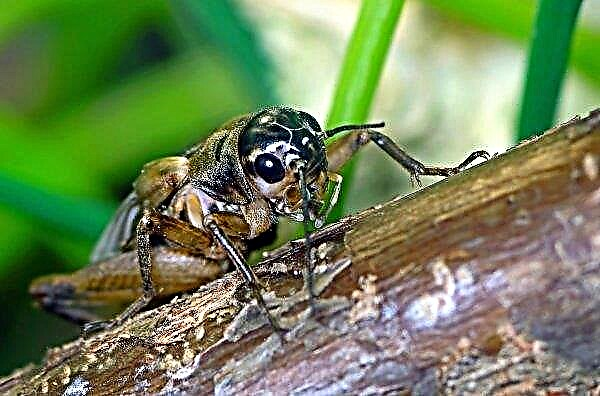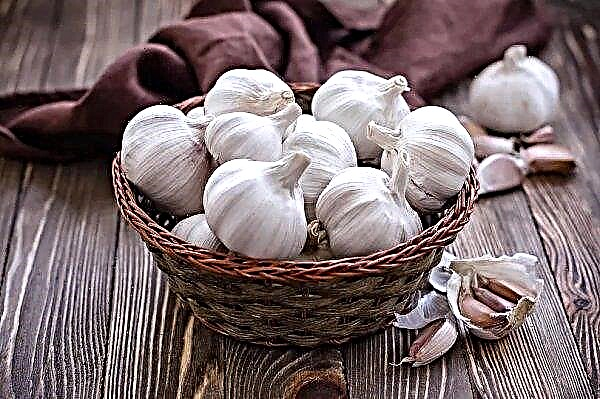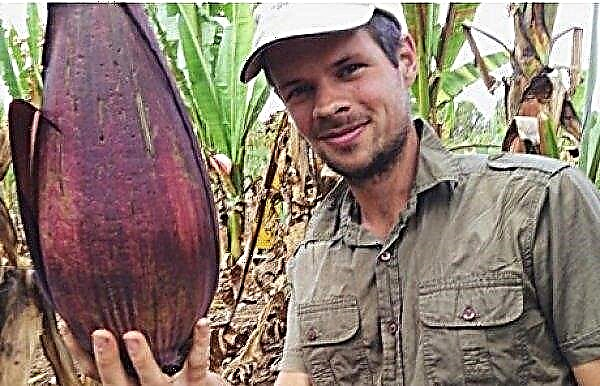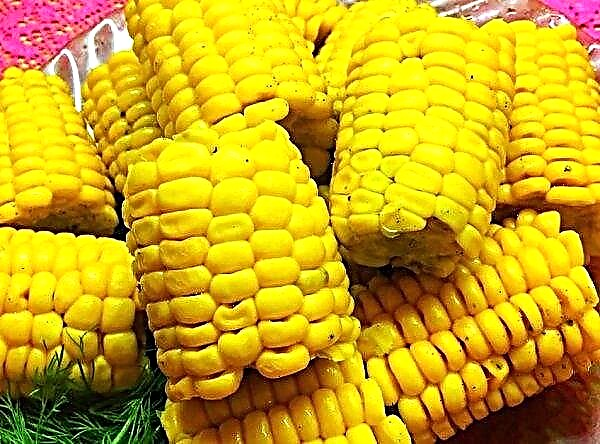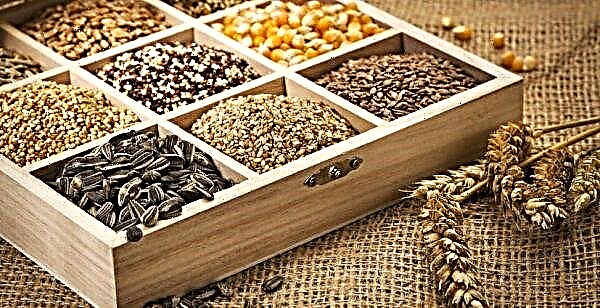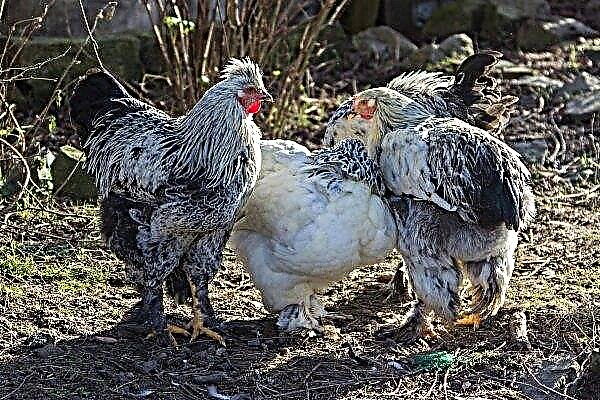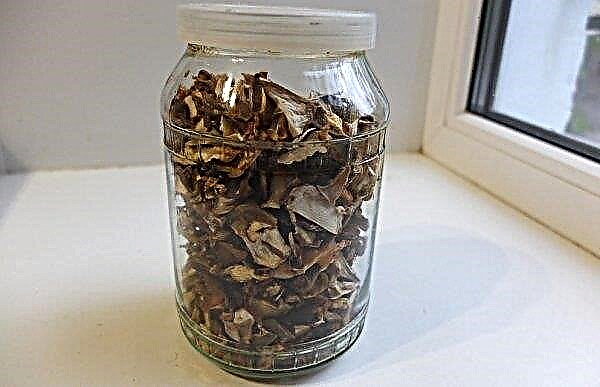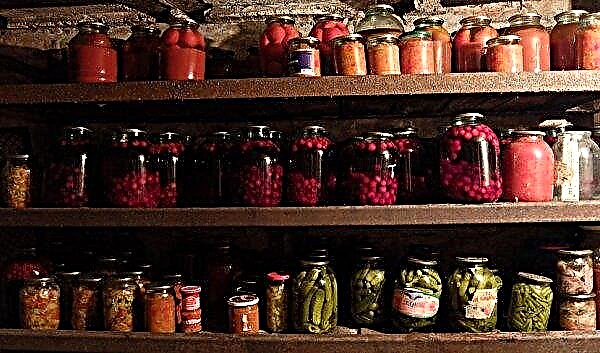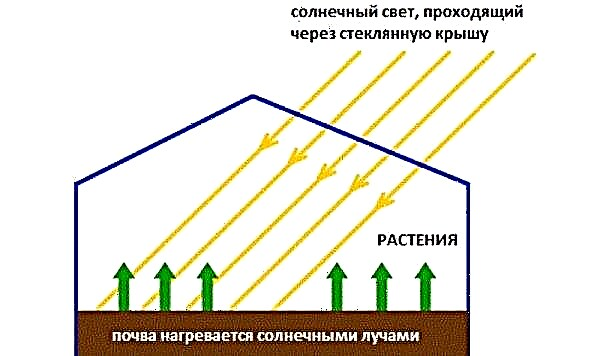Tsiperus, a well-fed one, is just as effective in decorating any room, bringing the charm of tropical ponds, just as easy to grow. The care of this plant at home will be discussed further.
Botanical description of the plant
The evergreen native from the shores of African reservoirs under consideration is a close relative of the famous papyrus, but is inferior to it in growth, reaching a little more than a meter in height, due to which it is actively bred at home. In this herbaceous plant, the stems resemble reeds, have a trihedral cross-section and are crowned at the top with a whorl in the form of an umbrella.
It consists of long and narrow light green, dark green and two-color leaves. Growing almost in water, cyperus actively moisturizes the surrounding air, benefiting both the person and other flowers growing nearby.Did you know? Cats love to eat cyperus leaves.
Main types
The most famous among these plants:
- Papyrus (Cyperus papyrus), growing on the banks of the Nile. Used in ancient Egypt to produce the eponymous paper precursor. It is able to grow up to 5 meters in height, so papyrus as an indoor plant for home growing is unsuitable.

- Umbrella, or alternate leaf cyperus (Cyperus alternifolius) - The most common home-grown. It grows to a height of just over a meter, crowned with a crown in the form of an umbrella consisting of leaves a quarter meter long.
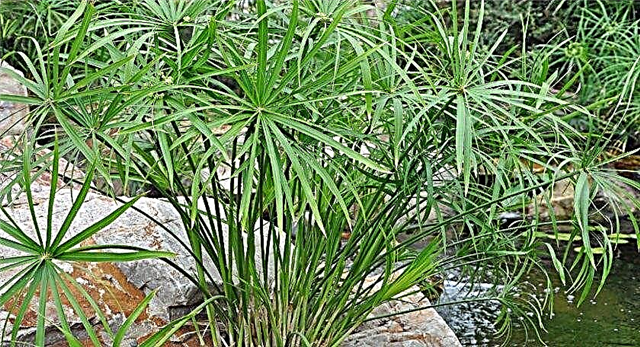
- Sprawling cyperus (Cyperus diffusus), reaching a height of less than 1 m. Has basal broad leaves, as well as narrower leaves gathered in umbrellas at the top.

- Tsiperus Zumula - is a stunted plant, most often found in living quarters and with its dense bush resembling a fountain.
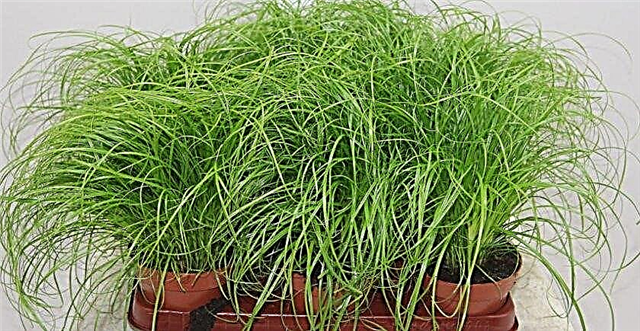
Conditions for successful growing at home
Although cyperus is quite unpretentious, creating optimal conditions for its cultivation allows him to show his best qualities.
Location and Lighting
Growing in natural conditions under the hot rays of the African sun, ciperus under the conditions of artificial cultivation continues to love bright lighting, but at the same time it is wary of direct sunlight, which is fraught with leaf burns for it. In this regard, in the warm season, pots with these flowers are recommended to be placed on the windowsills of windows facing west or east, and in winter plants can be placed near the southern windows. The described flower is able to withstand shading, but it slows down its growth and development, so additional artificial lighting will be useful in short winter days for cyperus.
The described flower is able to withstand shading, but it slows down its growth and development, so additional artificial lighting will be useful in short winter days for cyperus.
Temperature and humidity
The wash can exist safely in the following temperature range - +12 ... + 26 ° С. Under different conditions, cyperus experiences severe discomfort, which can lead to negative consequences. In summer, the optimum temperature is +18 ... + 22 ° С, in winter it should not fall below + 12 ° С. Growing in a natural habitat near the water, the plant needs a humid atmosphere and home growing.
Also from the African continent we came to such plants as: hemanthus and medinilla.
Optimal for it is air saturated with moisture by 70–75%. To achieve such humidity and maintain it stably, you can use room humidifiers, spray guns, aquariums located next to cyperus or just plates with water.
Home Care
The cultivation of satiety requires some effort and knowledge of some of the features inherent in it.
Watering
This plant is extremely hygrophilous; its root system must permanently remain wet. Watering should be frequent, regular and plentiful in the summer and a little more rare, but equally regular in the winter. Watering is carried out with water at room temperature. You should not use water directly from the water supply for this, it is better to defend it for at least a day. Most often, for a continuous supply of moisture to the soil as a bottom root watering, the pot is placed in a low water tank, from where it constantly enters the soil and, accordingly, to the roots of the plant through drainage holes. You can also put a container with a flower on wet expanded clay poured into a pallet.
You should not use water directly from the water supply for this, it is better to defend it for at least a day. Most often, for a continuous supply of moisture to the soil as a bottom root watering, the pot is placed in a low water tank, from where it constantly enters the soil and, accordingly, to the roots of the plant through drainage holes. You can also put a container with a flower on wet expanded clay poured into a pallet.
Top dressing
Since there is no dormant period in cyperus, this flower needs to be fed year-round. During the active growth phase - in spring and summer - the soil must be enriched with complex fertilizers intended for ornamental-deciduous plants every 3 weeks. In winter, the intensity of feeding is reduced by a third.
Did you know? Ancient Egyptian papyruses, replacing paper, were made from the closest relative of cyperus - papyrus, another 5000 years ago. But it turns out that papyrus is used for this purpose today — for the production of real paper, and its most expensive grades.
Fertilizer mixtures should first of all contain:
- phosphorus;
- nitrogen;
- potassium.
When using fertilizers, you must follow these rules:
- carefully observe the doses recommended in the annotation;
- half-dose young bushes;
- prevent liquid fertilizers from entering the green mass;
- in the growth phase of green mass, fertilize the bush mainly with nitrogen-containing fertilizing;
- in the flowering phase, the bush more requires phosphorus and potassium;
- in order not to burn the root shoots of the plant, fertilizers should be applied only after watering.

Pruning
As the bush develops, the old stems turn yellow and begin to dry. They should be trimmed in time to enable the plant to renew itself by releasing new stems. It is sometimes recommended to trim off excess green young shoots to stimulate the active growth of the rest of the plant.
How to transplant
It is advisable to transplant young cyperus bushes annually, and adults - as the substrate is depleted in the tank. The procedure can be carried out year-round, although it is preferable to perform the operation in early spring, in March or in autumn - in November.
The fourth part of a new high, but not wide capacity is filled with drainage material, on top of which soil with low acidity (pH 5–6.5) is poured, which is a mixture of humus and peat in equal proportions. The soil should be enriched with swamp mud, occupying 1/6 of its total mass. If you plan to place the flower pot in a container of water, then a small sand layer is poured on top of the substrate. Transplant is transplanted, transferring the root lump together with part of the previous substrate into a new container and filling it with freshly prepared soil mixture.
If you plan to place the flower pot in a container of water, then a small sand layer is poured on top of the substrate. Transplant is transplanted, transferring the root lump together with part of the previous substrate into a new container and filling it with freshly prepared soil mixture.
Breeding
The net successfully propagates through:
- cuttings;
- seed;
- tubers;
- bush divisions;
- outlets.
Most often, gardeners use seeds and cuttings for this process.
Video: cyperus breeding
Cuttings
Propagated by cutting by cuttings is quite simple. To this end, it should:
- pick a whorl with leaves that have sleeping buds in the sinuses;
- separate it from the bush along with a stem up to 8 cm long;
- plant the whorl in sand or loose soil with the stem up, sprinkling it lightly and then actively watering it;
- after a while, the stalk will root and sprout at the place of contact with the ground.
Since in nature, cyperus multiplies, simply dropping a stem with an apical rosette from which roots soon develop into the water, the same can be done at home. For this purpose, the stem is tilted until the whorl at the top contacts the water, securing it. When the rosette takes root, it is separated from the bush and planted in the prepared soil for cyperus.
Seed cultivation
It is possible to grow syt with the help of seeds year-round, but the optimal result is obtained with a long daylight in the warm season.
The process itself proceeds as follows:
- Seeds are planted in low containers filled with a mixture of humus and peat, united in equal proportions and diluted with half of the river sand.
- The seed material is not buried in the soil, but simply pressed against it and well watered.
- Then, the seeded containers are covered with glass or tightened with a transparent film to create a greenhouse effect.
- In order for seed germination to be successful, they should be regularly watered with warm water while maintaining a stable ambient temperature above + 18 ° C.
- The watering process is combined with the ventilation and elimination of condensation from glass or film.
- After the emergence and strengthening of the sprouts, they are dived into tall pots with a diameter of up to 10 cm with the same substrate as for the seeds, as well as with good drainage.
Video: growing cyperus from seeds
Growing difficulties
The undemanding cyperus does not mean that the plant does not experience any problems with its cultivation.
They happen when the rules for caring for him are violated, which the appearance of the bush signals to the owner:
- If the leaves are smaller and their color is lighter, then cyperus does not have enough light, which can be corrected by artificial lighting.
- The brown ends of the leaves indicate insufficient air humidity, which can be increased with a humidifier or sprayer, as well as by installing a wide tank of water near the plant.
- If the tips of the leaves dry in cyperus or the leaves begin to completely turn yellow, you should think about additional dressing or transplanting the plant into a more spacious container with a new substrate.
- Noticeable wilting of the bush can be triggered by an excessively high temperature in the room, which can be eliminated by ventilation.
- Having become close to the overgrown root system, the pot inhibits the growth and development of the plant. An emergency transplant will help to solve the problem.
- Gray spots covering the foliage indicate sunburns received on a window facing the south side. The pot needs to be rearranged on another window sill or to provide the bush with diffused sunlight.

Weakened by adverse agricultural conditions, the plant may become a victim of an attack of pests:
- spider mite;
- thrips;
- mealybug;
- whiteflies.
This is evidenced by:
- puncture punctures passing along the edges of the leaves;
- yellowing of the sheet and its deformation;
- the presence of a web on the back of the whorls;
- the presence of midges around white dots on the back of the leaves;
- the appearance of cotton-like lumps and sticky plaque on the stems and foliage.
In the presence of these symptoms, it is necessary to urgently treat the bush with insecticides widely available in specialized stores, or resort to folk remedies in the form of alcohol, soap or oil solutions.
Home value
While in their homeland, on the island of Madagascar, cyperus is considered a weed and is destroyed when growing cultivated plants, when grown home, the plant enjoys great respect and even love. It is often used in the design of green corners in apartments, fitting into the neighborhood with other colors, complementing them, and not suppressing. Moreover, useful properties bordering on mysticism are attributed to him.
For example, it is believed that fullness is able to absorb the negative aura of a person, and in return to fill it with positive energy and optimism. In addition, many believe that a multilevel flower with umbrellas located at different heights like a waterfall fills the entire human home with positive energy. It is believed that the flower of cyperus is useful to schoolchildren, students, teachers, scientists and other mental workers, successfully stimulating their brain activity. Along with these unverified useful properties, there are more reliable qualities of sati, which are used in traditional medicine.
It is believed that the flower of cyperus is useful to schoolchildren, students, teachers, scientists and other mental workers, successfully stimulating their brain activity. Along with these unverified useful properties, there are more reliable qualities of sati, which are used in traditional medicine.
So, it is believed that a decoction of its leaves and stems helps get rid of:
- insomnia
- headaches;
- high blood pressure;
- pain in the stomach.
Important! Since syt loves not only moist, but also fresh air, it is useful to expose the flower in suitable weather in the open sky.
When the impressive tropical appearance of the plant is combined with its unpretentiousness and sufficient simplicity of growing at home, this quickly makes it popular, which is what happened with cyperus around the world.






